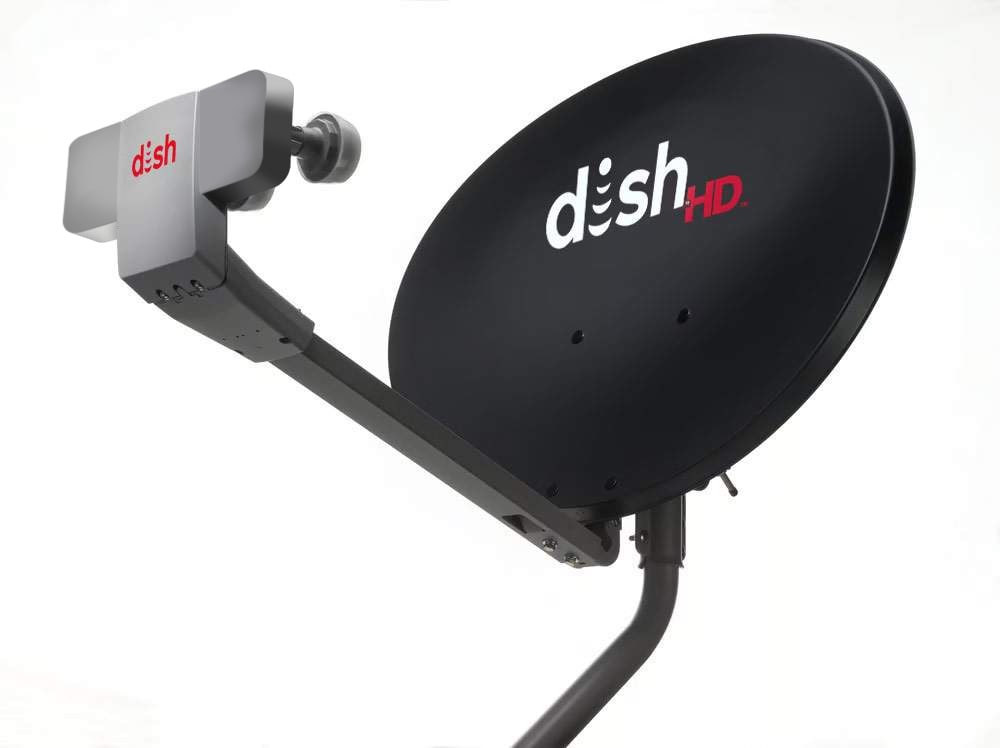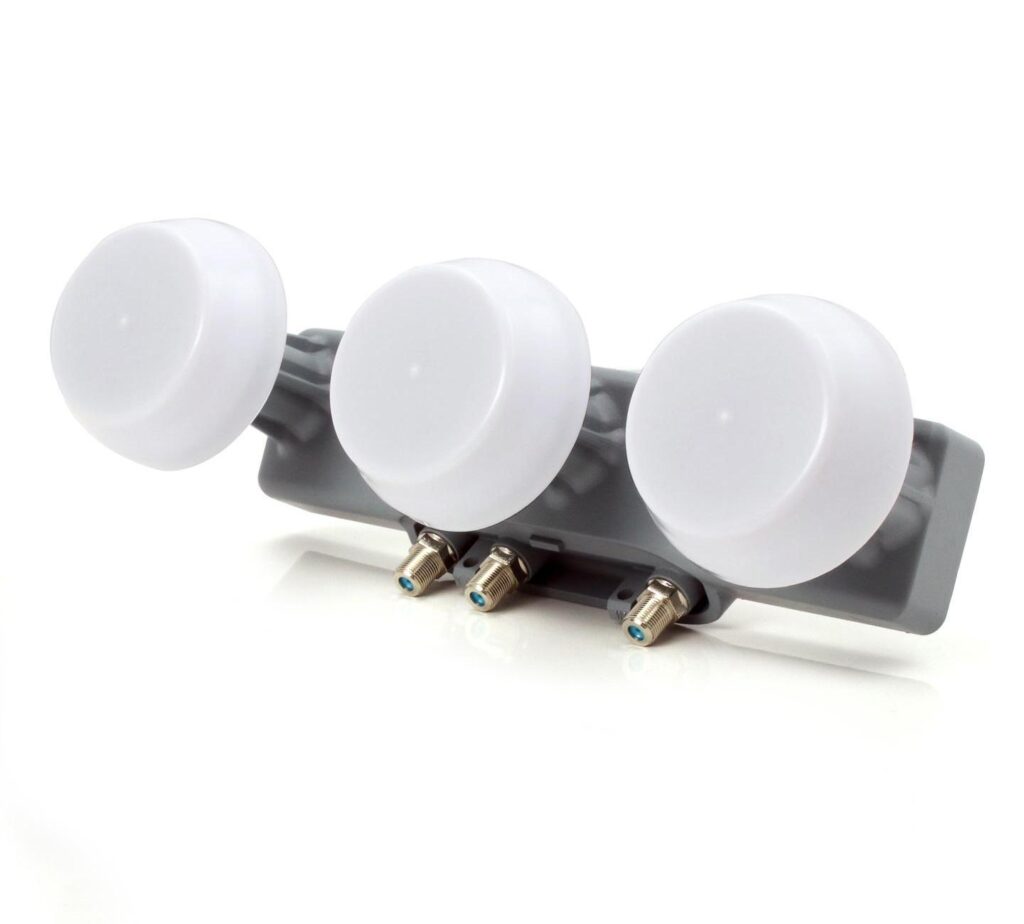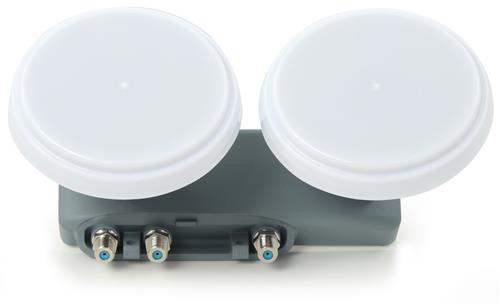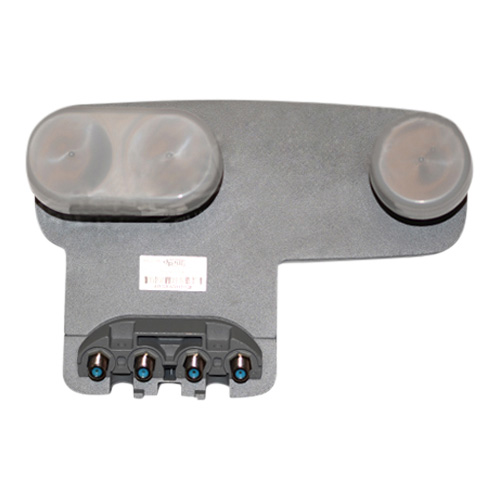This is a great time to get DISH. Even I’m surprised by how much the entire satellite TV industry has bounced back in the last year. Thanks to some boneheaded moves by the major streaming apps, suddenly satellite TV seems like the best choice for low cost and high value. That’s a huge change in perception from just a few years ago. I’ve always been a big fan, and a lot of people are starting to see my point.
First of all, let’s say the quiet part out loud. The company and the service are called “DISH.” For years they were called Dish Network, and you’ll sometimes still hear the company refer to itself that way. But I call it DISH because, that’s what they want me to call it. But, it does make it a little hard to talk about the equipment because obviously the receiving antenna is also called a “dish.” And if you’re distinguishing it from DIRECTV, well what do you say? Is it a DIRECTV dish or a DISH dish? I know, right?
But, since this article is all about one vendor, I’m still going to use the word “dish” to refer to a satellite receiving antenna. Typing “satellite receiving antenna” is kind of a drag.
The LNB is the thing at the front of the dish. You can read more about them here. The bumps on the front, covered by white plastic caps, are called “feed horns.” You’ll hear people calling the feed horns “LNBs,” and they’ll say that the Western Arc has “three LNBs” while the Eastern Arc has “two LNBs.” It’s really more correct to call the entire assembly an LNB, but I recognize that I may not win that battle. Still, to be clear, I’m going to refer to the entire thing as an LNB, and each bump coming off it as a feed horn.
DISH has always had two fleets of satellites. One hangs off the East coast and one off the West, and naturally these are referred to as Eastern Arc and Western Arc. To be more specific, there are satellites at 61.5 and 77 degrees west longitude, and satellites at 110 degrees and 129 degrees west longitude.
Most of the country, geographically, can see the Western Arc just fine. Folks on the east coast and into the midwest are often best served by the Eastern Arc. There’s a lot of duplication between the two, obviously. Really it’s just the local channels on the edges of the country that are unique to each “arc.”
At one point, the Eastern Arc dishes were almost all grey while the Western Arc dishes generally had a black reflector like this one.

If you see a black reflector, you can’t just assume it’s a Western Arc dish, though. The black reflector will work with both arcs. Really, you need to look at the LNB, which is the front part of the dish. It’s easy to tell the difference between Western Arc and Eastern Arc.

The Western Arc LNB will have three white feed horns on it. Up until 2023, DISH operated three satellite locations in the west, but they have since retired the 129 location.

Eastern Arc LNBs have two white feed horns to correspond to the two locations used in the Eastern Arc. At one time DISH operated three locations in the Eastern Arc so you will sometimes see this LNB with three feed horns.

This LNB doesn’t need to be replaced, it simply doesn’t use the third feed horn anymore.
For much of the country, you have your choice of either LNB and you can use the one that makes more sense for you. For example, if you have no visibility to the west and you do have visibility to the east, you can choose the Eastern Arc LNB.
If you’re not sure which LNB is best for your area there’s an easy way to find out. Drive around your area and look for other people who have DISH. You’ll see the dishes on their roofs. Take a close look, if you can, and see if they have the Eastern Arc or Western Arc LNB. Then just get what they’ve gotten.
Newer DISH equipment uses the “hybrid” system. This system is used to feed Hopper 3 and Wally receivers, and in most cases can also feed other equipment. It’s a little hard to know from looking at the dish whether it’s a hybrid dish or not. You need to look under the feed horns for a dpH logo like this one:

In all other respects, the LNBs are identical. If you have a non-Hybrid dish (which will have a dpP sticker on it) you can use a DPH42 multiswitch to add that hybrid capability.
If you’re ready to get into DISH or upgrade your existing DISH setup, you’ll need an expert on your side. You can shop at Solid Signal for everything you need for a DISH setup. We have all the same parts that the professionals use. If you need help choosing a part, or want someone to come out and do the work, call us! We have a team of experts who can help you with everything from beginning to end. We’ll help you get set up at home, on the road, or even in your boat.
Call us at 888-233-7563 during East Coast business hours. If it’s after hours, no problem! Fill out the form below. We’ll get right back to you!
The post How can you tell which DISH satellite antenna you need? And how can you even tell them apart? appeared first on The Solid Signal Blog.
Continue reading...
A bit about DISH hardware
First of all, let’s say the quiet part out loud. The company and the service are called “DISH.” For years they were called Dish Network, and you’ll sometimes still hear the company refer to itself that way. But I call it DISH because, that’s what they want me to call it. But, it does make it a little hard to talk about the equipment because obviously the receiving antenna is also called a “dish.” And if you’re distinguishing it from DIRECTV, well what do you say? Is it a DIRECTV dish or a DISH dish? I know, right?
But, since this article is all about one vendor, I’m still going to use the word “dish” to refer to a satellite receiving antenna. Typing “satellite receiving antenna” is kind of a drag.
First: LNB, or feed horn?
The LNB is the thing at the front of the dish. You can read more about them here. The bumps on the front, covered by white plastic caps, are called “feed horns.” You’ll hear people calling the feed horns “LNBs,” and they’ll say that the Western Arc has “three LNBs” while the Eastern Arc has “two LNBs.” It’s really more correct to call the entire assembly an LNB, but I recognize that I may not win that battle. Still, to be clear, I’m going to refer to the entire thing as an LNB, and each bump coming off it as a feed horn.
Eastern Arc vs. Western Arc
DISH has always had two fleets of satellites. One hangs off the East coast and one off the West, and naturally these are referred to as Eastern Arc and Western Arc. To be more specific, there are satellites at 61.5 and 77 degrees west longitude, and satellites at 110 degrees and 129 degrees west longitude.
Most of the country, geographically, can see the Western Arc just fine. Folks on the east coast and into the midwest are often best served by the Eastern Arc. There’s a lot of duplication between the two, obviously. Really it’s just the local channels on the edges of the country that are unique to each “arc.”
How to tell an Eastern Arc vs. Western Arc dish
At one point, the Eastern Arc dishes were almost all grey while the Western Arc dishes generally had a black reflector like this one.
If you see a black reflector, you can’t just assume it’s a Western Arc dish, though. The black reflector will work with both arcs. Really, you need to look at the LNB, which is the front part of the dish. It’s easy to tell the difference between Western Arc and Eastern Arc.

The Western Arc LNB will have three white feed horns on it. Up until 2023, DISH operated three satellite locations in the west, but they have since retired the 129 location.

Eastern Arc LNBs have two white feed horns to correspond to the two locations used in the Eastern Arc. At one time DISH operated three locations in the Eastern Arc so you will sometimes see this LNB with three feed horns.

This LNB doesn’t need to be replaced, it simply doesn’t use the third feed horn anymore.
Which LNB should I choose?
For much of the country, you have your choice of either LNB and you can use the one that makes more sense for you. For example, if you have no visibility to the west and you do have visibility to the east, you can choose the Eastern Arc LNB.
If you’re not sure which LNB is best for your area there’s an easy way to find out. Drive around your area and look for other people who have DISH. You’ll see the dishes on their roofs. Take a close look, if you can, and see if they have the Eastern Arc or Western Arc LNB. Then just get what they’ve gotten.
A hybrid dish?
Newer DISH equipment uses the “hybrid” system. This system is used to feed Hopper 3 and Wally receivers, and in most cases can also feed other equipment. It’s a little hard to know from looking at the dish whether it’s a hybrid dish or not. You need to look under the feed horns for a dpH logo like this one:

In all other respects, the LNBs are identical. If you have a non-Hybrid dish (which will have a dpP sticker on it) you can use a DPH42 multiswitch to add that hybrid capability.
Want to know more?
If you’re ready to get into DISH or upgrade your existing DISH setup, you’ll need an expert on your side. You can shop at Solid Signal for everything you need for a DISH setup. We have all the same parts that the professionals use. If you need help choosing a part, or want someone to come out and do the work, call us! We have a team of experts who can help you with everything from beginning to end. We’ll help you get set up at home, on the road, or even in your boat.
Call us at 888-233-7563 during East Coast business hours. If it’s after hours, no problem! Fill out the form below. We’ll get right back to you!
The post How can you tell which DISH satellite antenna you need? And how can you even tell them apart? appeared first on The Solid Signal Blog.
Continue reading...

